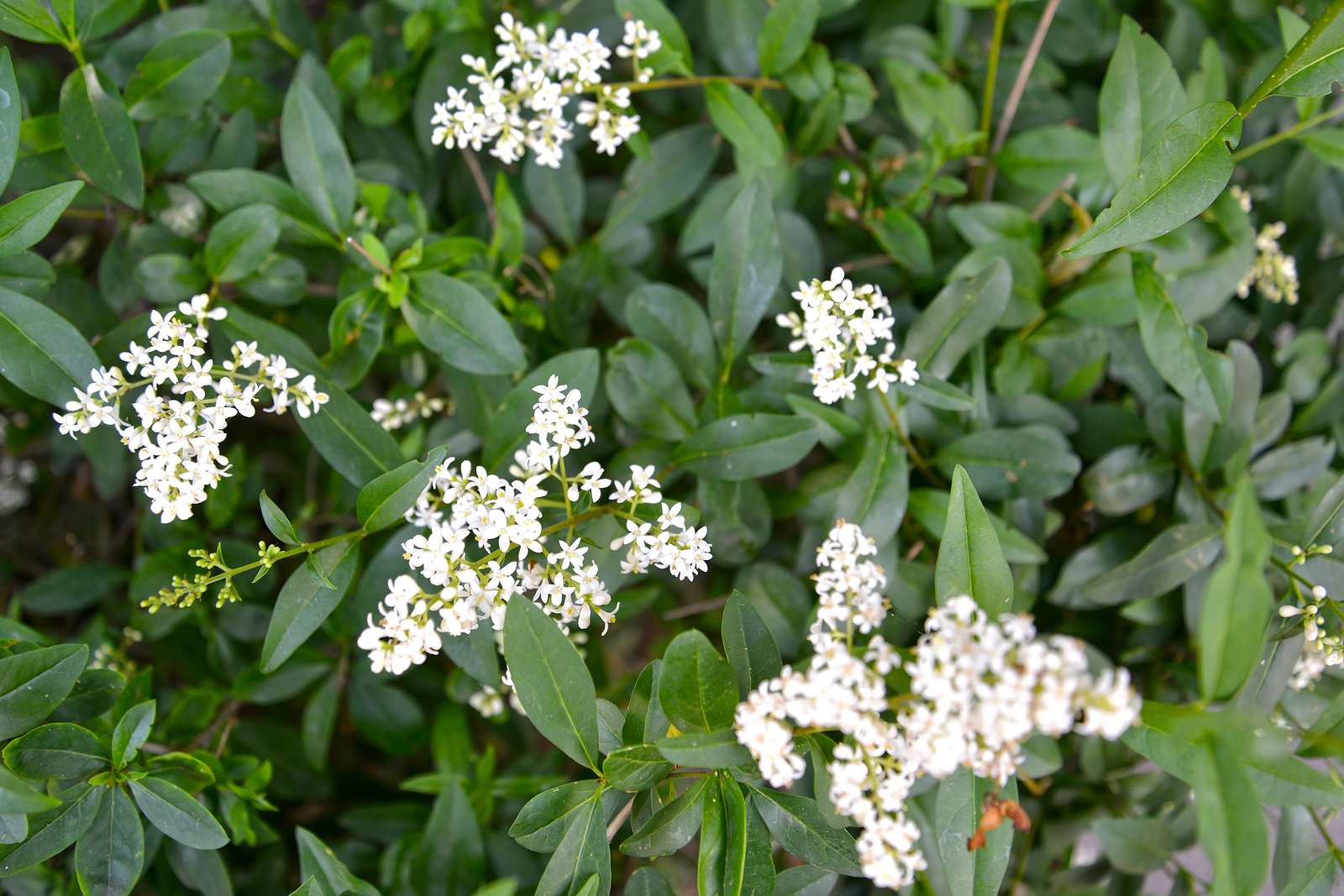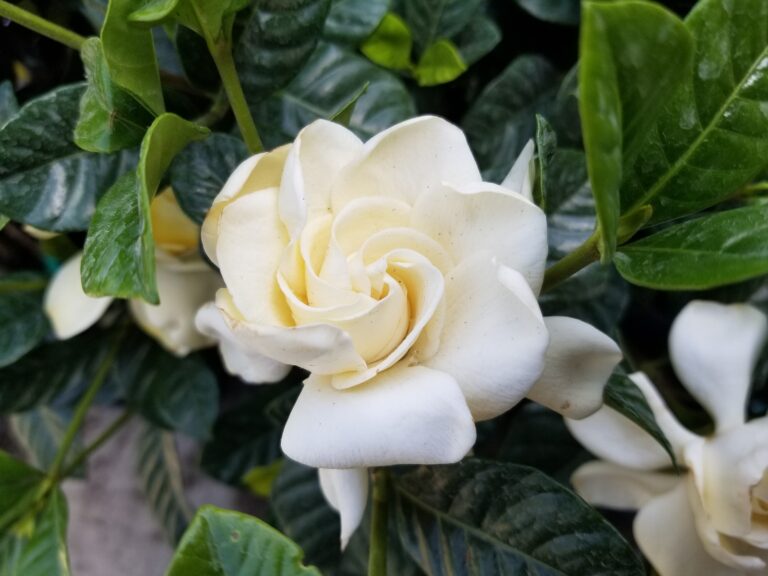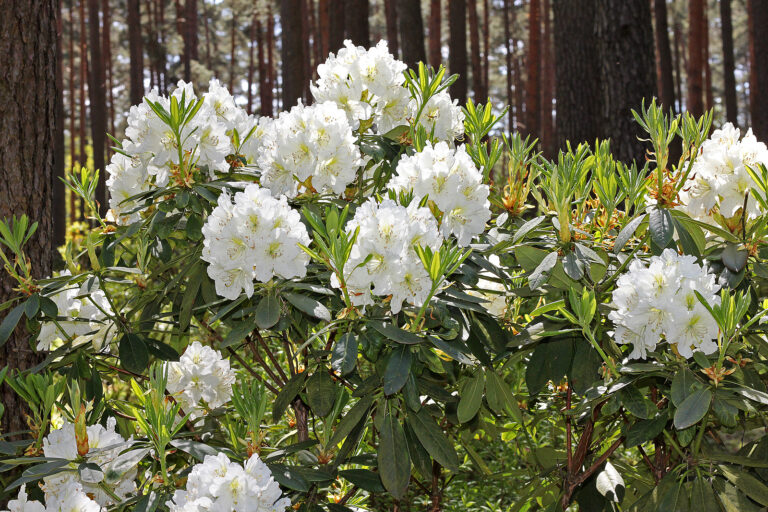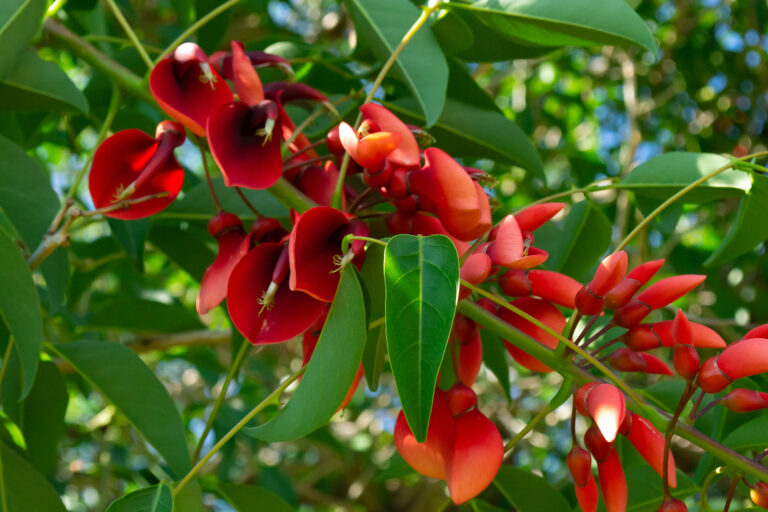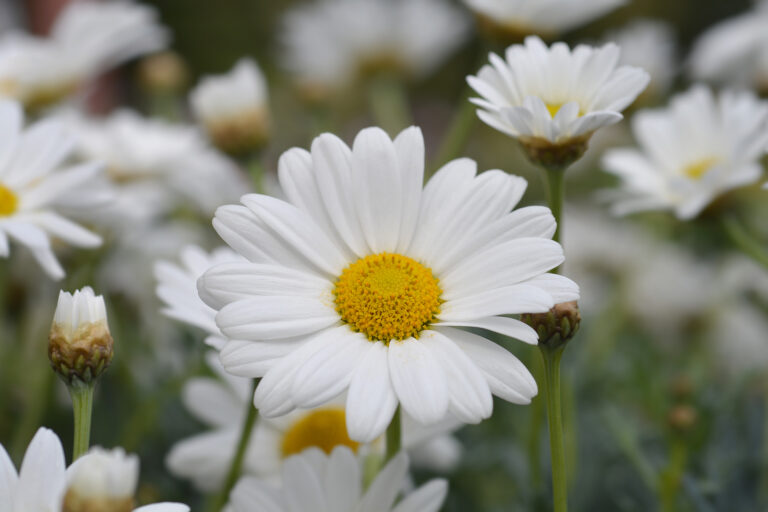How to Grow Ligustrum – Privet
Ligustrum — commonly called privet–is one of the most widely used hedge plants. Ligustrum are grown for their foliage and flowers. Besides hedging, Ligustrum can used in shrub borders and as a background plant.
Ligustrum bear showy clusters of white to creamy white flowers in late spring or early summer. Clipped hedges bear fewer flowers since shearing removes most of the flower-bearing branches. Blossoms are followed by small, berrry-like blue-black fruits.
Ligustrum is a genus of about 50 species of deciduous and evergreen shrubs and trees. About 10 of the species are commonly used as hedges and screens.
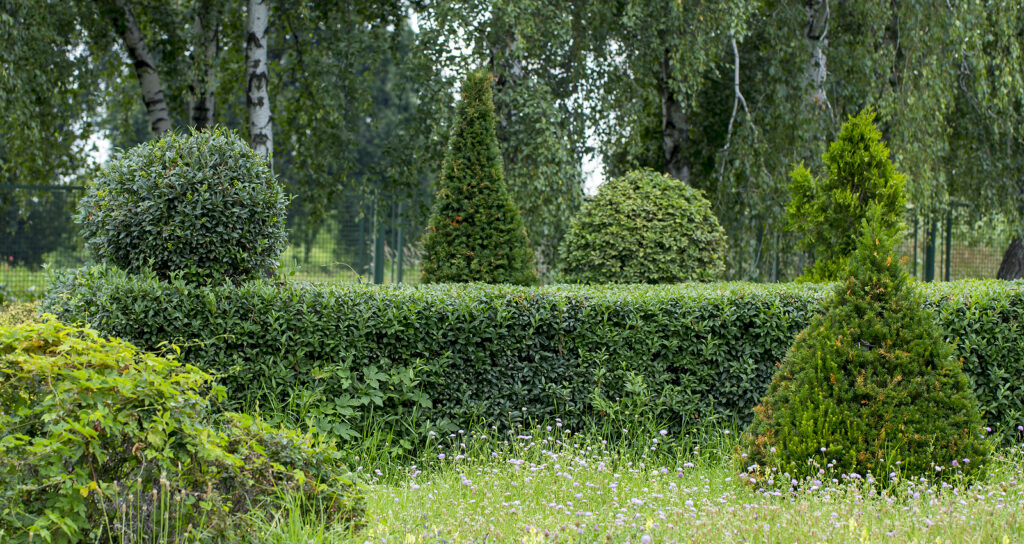
Get to know Ligustrum
- Plant type: Evergreen shrub
- Growing zones and range: Zones 4 to 10 depending on the variety
- Hardiness: Hardy to Zone 4
- Height and width: 4 to 12 feet (1.2-3.6m) tall and wide depending on the variety
- Growth rate: Fast
- Form and habit: Dense, upright, somewhat pyramidal
- Foliage: Oval to rounded leaves to 3 inches (7.6cm) long, medium to dark green
- Flowers: 1 to 2 panicles of abundant very small creamy white, scented flowers
- Fruits: Small blue-black berrylike fruits in early fall
- Bloom time: Late spring through early summer
- Uses: Tall hedge or screen; can also be clipped into formal shapes and featured in tubs or large pots
- Common name: Privet
- Botanical name: Ligustrum
- Family name: Oleaceae
- Origin: Woodlands and thickets in Europe, North Africa, Southwest and Eastern Asia
Where to plant Ligustrum
- Plant Ligustrum in sun or shade.
- Ligustrum tolerates most soils. Plant Ligutrum in well-drained soil.
- Ligustrum prefers a soil pH of 6.0 to 7.5.
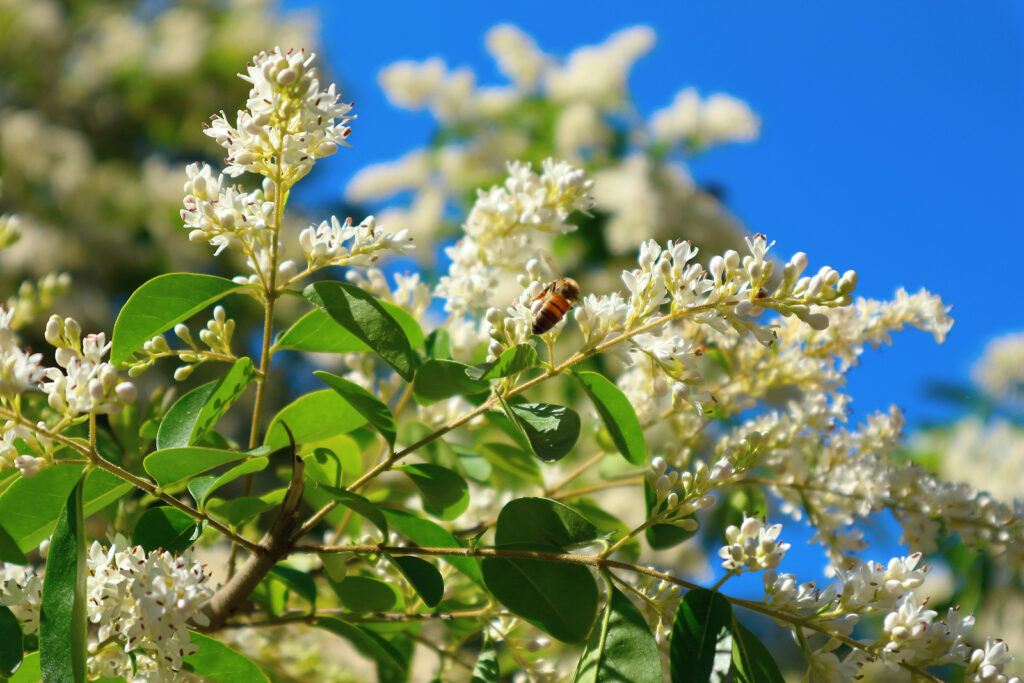
When to plant Ligustrum
- Set container-grown Ligustrum in the garden in spring or autumn.
- Sow seed in containers in a cold frame in autumn or spring.
Planting and spacing Ligustrum
- Space Ligustrum 4 to 12 feet (1.2-3.6m) apart depending on the variety.
- Sow seed 1/4 inch deep in evenly prepared soil.
How to water and feed Ligustrum
- Give Ligustrum regular water.
- Feed Ligustrum with an all-purpose organic fertilizer in spring.
How to care for Ligustrum
- Pruning season for Ligustrum is after flowering.
- Ligustrum hedges look best if pruned or sheared twice during the summer.
Ligustrum pests and diseases
- Ligustrum can be attacked by aphids, scale insects, Japanese beetles, weevils, mites, and thrips.
- Ligustrum is susceptible to leaf spot, blights, cankers, crown gall, and root rot.
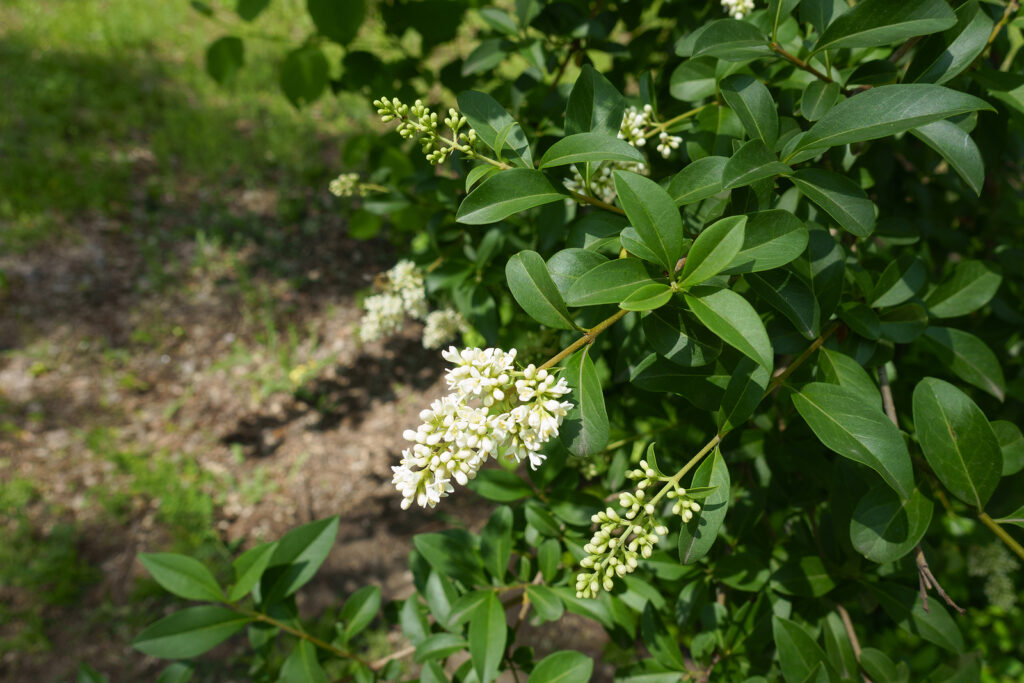
Ligustrum propagation
- Sow seed in containers in a cold frame in autumn or spring.
- Take semi-ripe cuttings in summer or hardwood cuttings in winter.
Ligustrum varieties to grow
- Ligustrum amurense, Amur privet, good for cooler regions, Zones 3 to 7 or 8, a deciduous Chinese species, grows 10-12 feet (3.1-3.7m). It can withstand heavy pruning.
- L. japonicum, Japanese privet, a compact evergreen, slow-growing species, and a favorite; grows to 12 feet (3.7m) tall and usually 8 feet (2.4m) wide, with thick, shiny, rounded 2-4 inches (5.1-10.2cm) leaves, paler underneath. Pyramid-shaped panicles of heavily perfumed white flowers bloom for several weeks in midspring. Popular for southern gardens, sometimes pruned as a tree. The dark berries are flat and waxy. Cultivars include variegated and curly-leaved forms. Grows in warmer regions, Zones 7 to 9.
- L. lucidum, Glossy privet, evergreen tree. Makes a round-headed tree that eventually reaches 35-40 feet (10.7-12.2m). Can be kept lower as a big shrub or may form a multitrunked tree. Glossy, 4-6 inches (10.2-15.2cm) long leaves are tapered and pointed, dark to medium green on both sides feel leathery but lack the slightly spongy feel of L. japonicum’s leaves. Flowers in especially large, feathery clusters followed by a profusion of fruit.; can grow in narrow areas; good street tree if not planted near pavement or where fruit will drop on cars. Performs well in large containers. Or plant 10 feet (3.1m) apart for tall privacy screen. Useful as windbreak.
- L. obtusifolium, Border privet, a deciduous, multi-stemmed, twiggy shrub to 12 feet (3.7m) tall and wide. The leaves often turn purple in fall, and the early to midsummer flowers nod from side branches. L. o. var. regelianum (Regal privet) is even more strongly horizontal, with hairier leaves that are held in a flat plant. Zones 4 to 7.
- L. ovalifolium, California privet, a vigorous large shrub originally from Japan, 10-15 foot (3.1-4.6m), works well for hedges. Its glossy green leaves last almost year-round in Zone 6; in Zones 7 and 8, it is an evergreen. In summer it bears clusters of creamy why flowers followed by black fruits. Zones 5 to 8.
- L. vicaryi, Vicary golden privet, deciduous shrub. This one has yellow leaves; color is strongest on plants in full sun. Grows 4-6 feet (10.2-15.2cm) high, possibly to 12 feet (3.7m). Best planted along; color does not develop well under hedge shearing.
- L. vulgare, Common privet, deciduous shrub. Grows to 15 feet (4.6m) unsheared. Dark green leaves less glossy than those of L. ovalifolium, root system less greedy. Clusters of black fruit conspicuous on unpruned or lightly pruned plants. ‘Lodense’ (‘Nanum’) is a dense dwarf form that reaches only 4 feet (1.2m) with equal spread.

